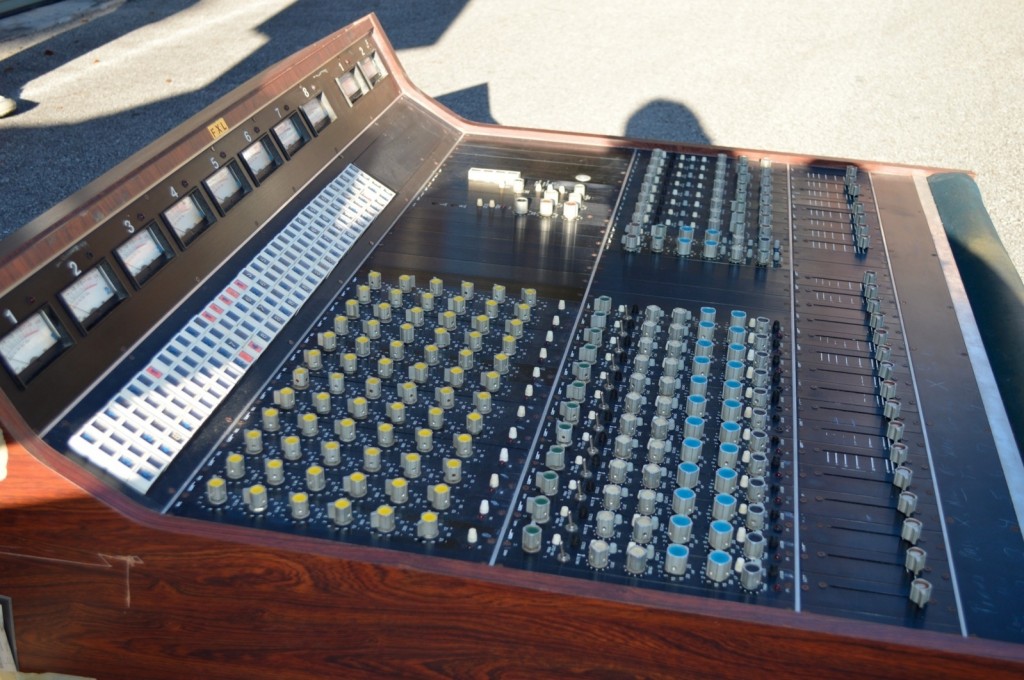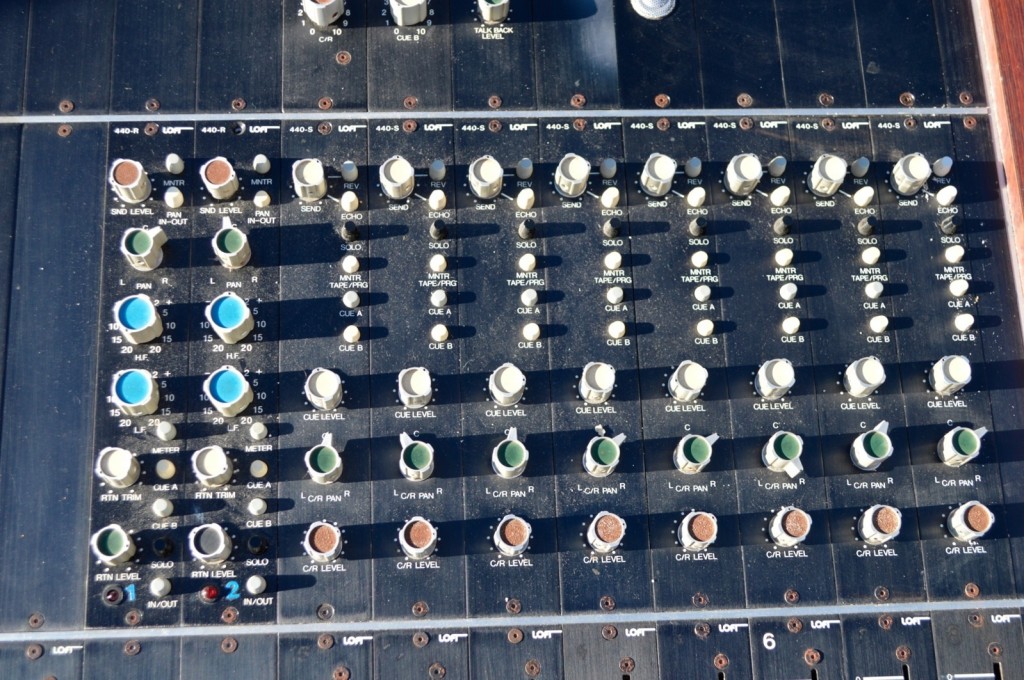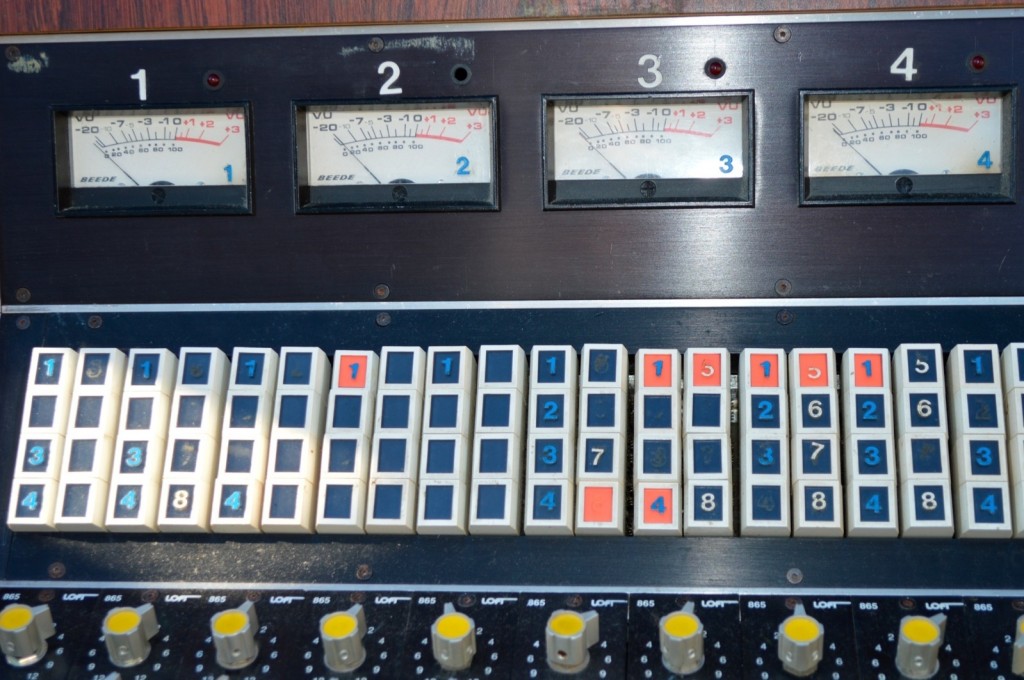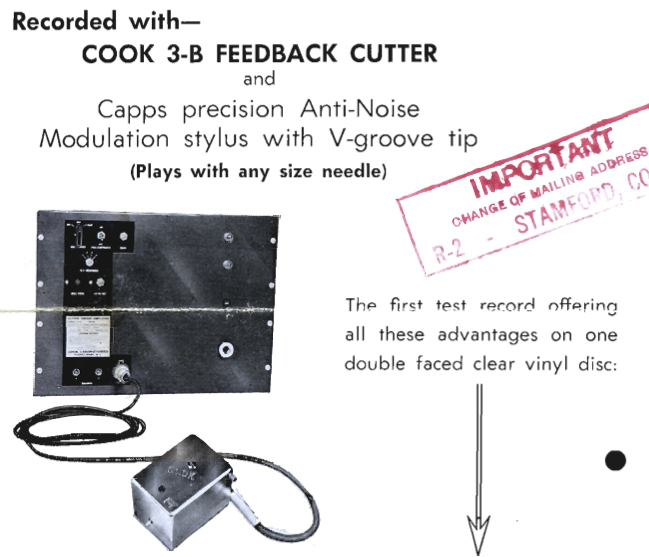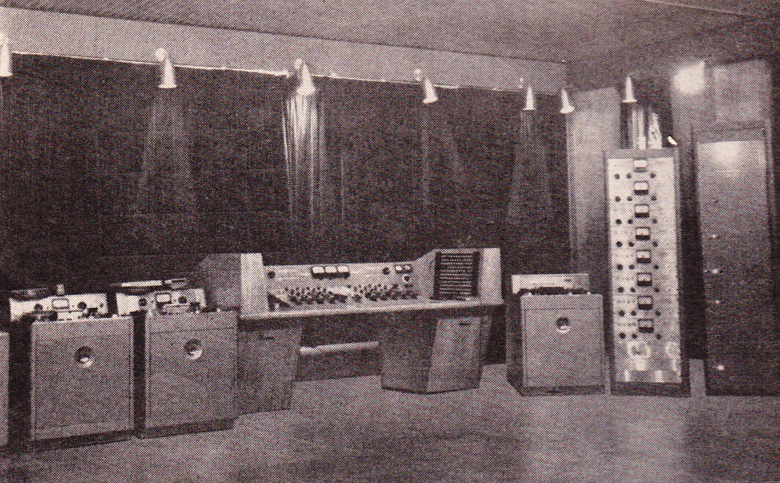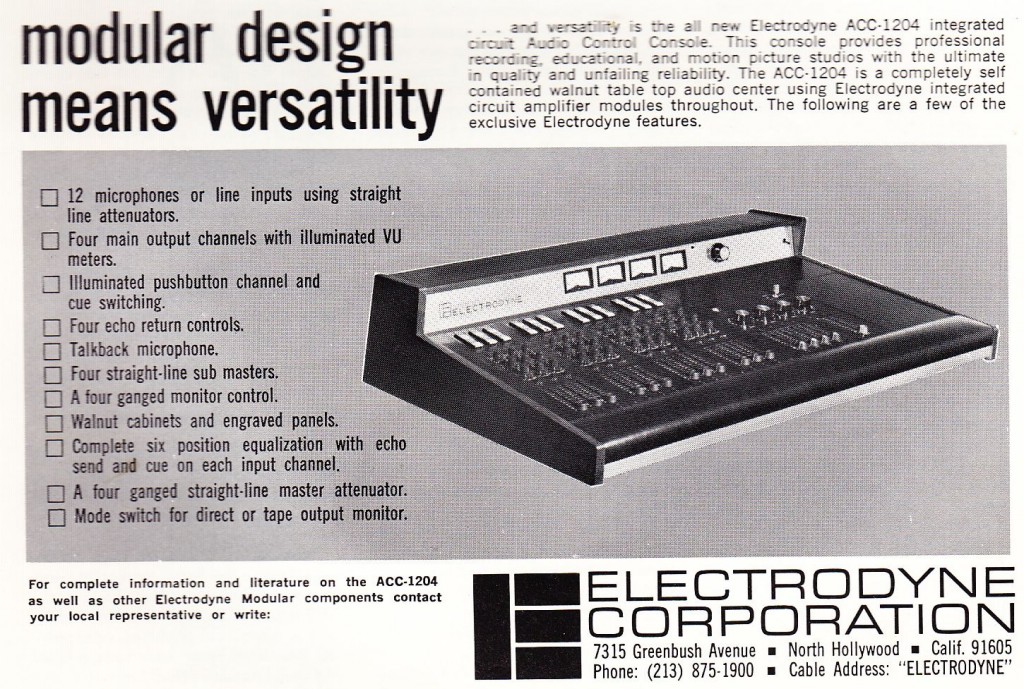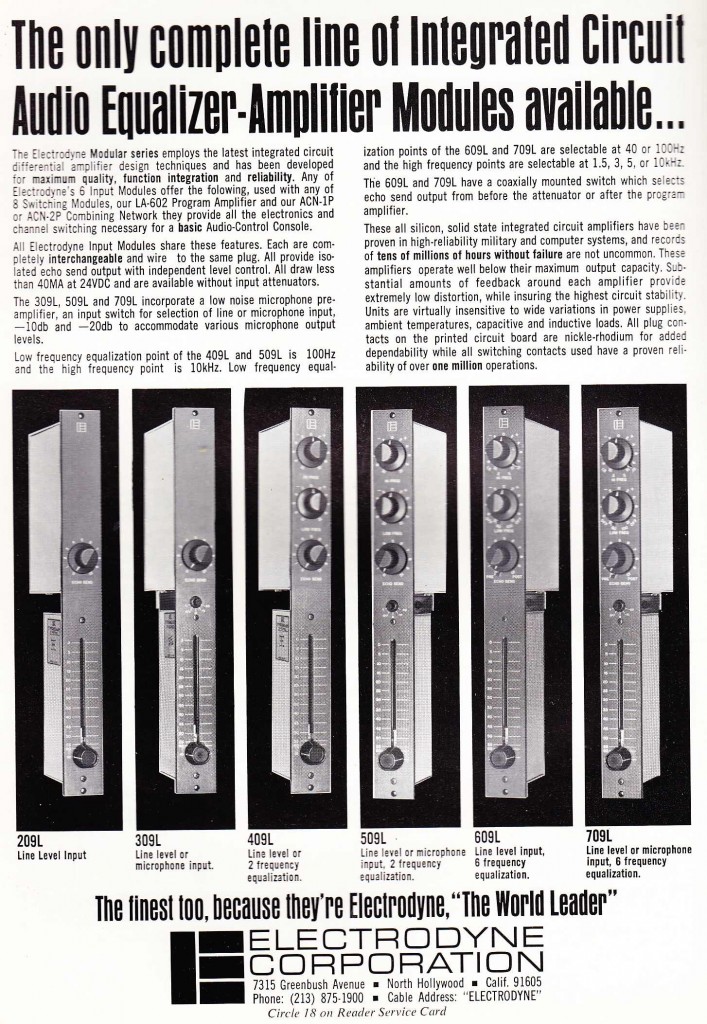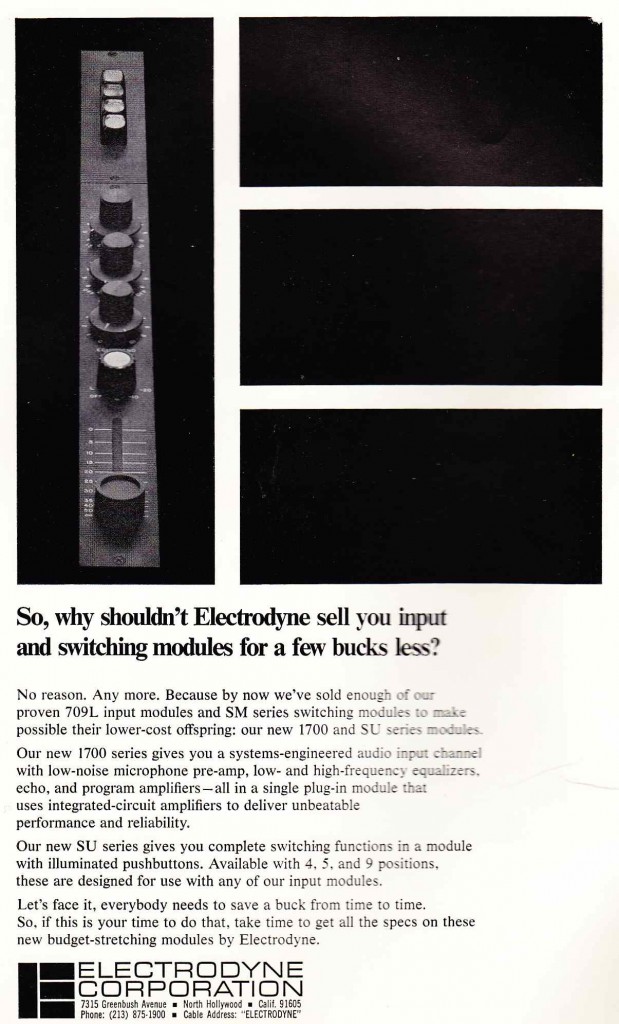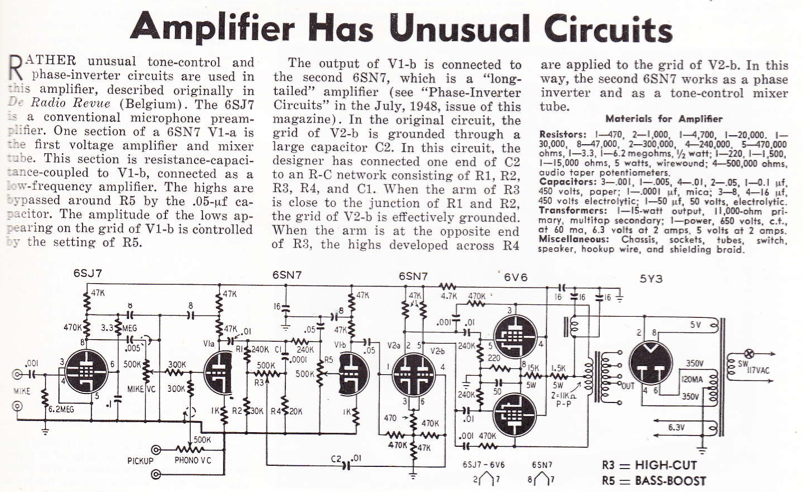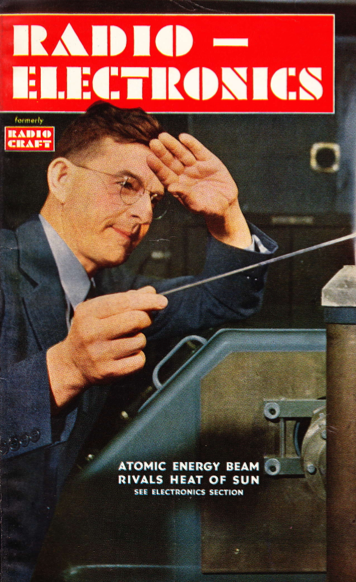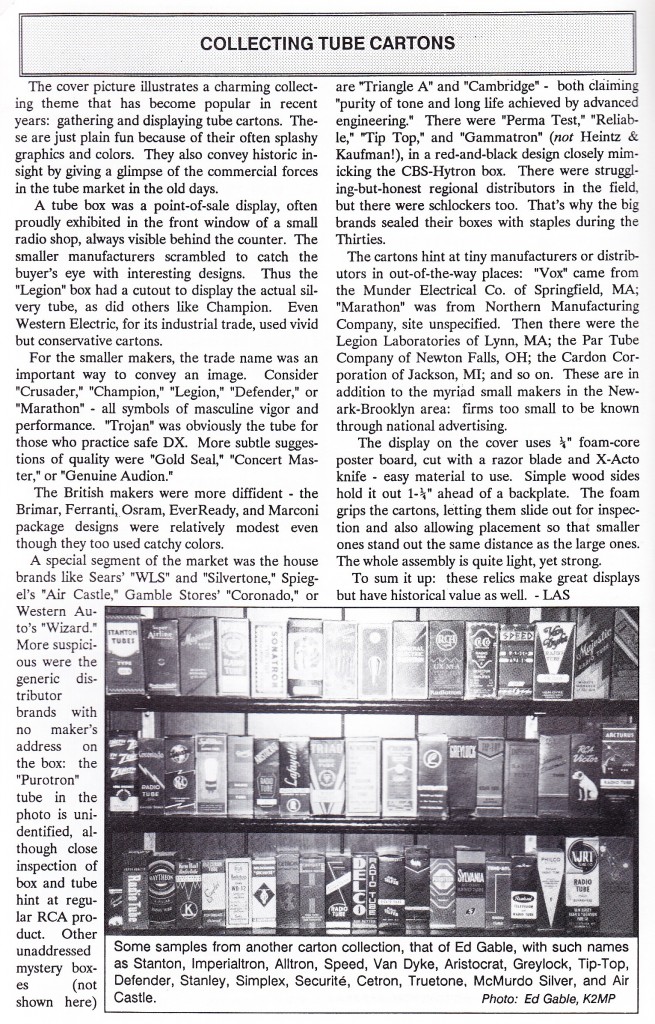Several years ago we ran a couple of pieces about LOFT AUDIO, a 1970’s era Connecticut Pro Audio manufacturer. LOFT founder Peter Nimirowski got in touch with us and provided some never-before seen factory photos and documentation. Click here to read the initial PS dot com article, and then click here for the follow-up with Peter’s comments. Anyhow, a decent-condition LOFT 440 Console has finally turned up on eBay, and if it wasn’t tax-time you know I’d be buying this thing. As with any 40-year-old piece of audio equipment, caveat emptor. Click here for the eBay auction. BTW, whatya think all those vintage-70’s API-type knobs are worth? Prolly close to the BIN price…
Month: March 2013
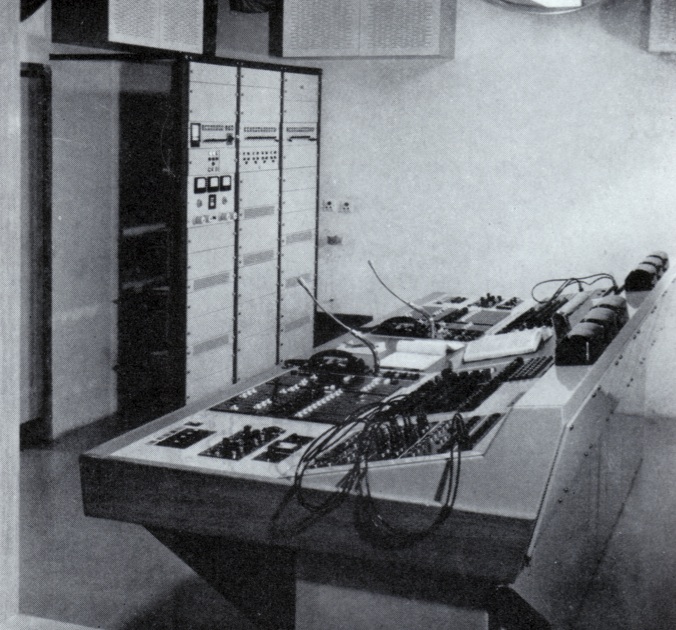 From DB mag, Jan 1970, a short piece by J. Borwick on Decca Records’ location-install at Vienna’s famous Sophiensaal venue. Thanks to T.F. for the scan.
From DB mag, Jan 1970, a short piece by J. Borwick on Decca Records’ location-install at Vienna’s famous Sophiensaal venue. Thanks to T.F. for the scan.
DOWNLOAD: db_Mag-7001-Decca_in_Vienna_bw 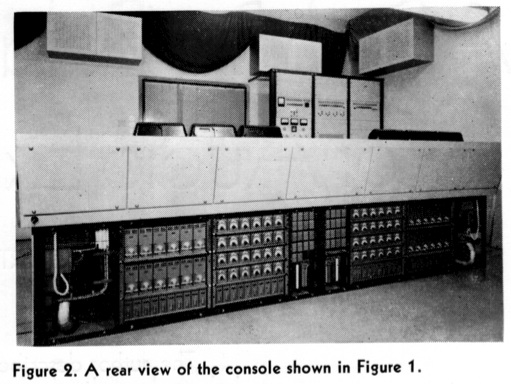
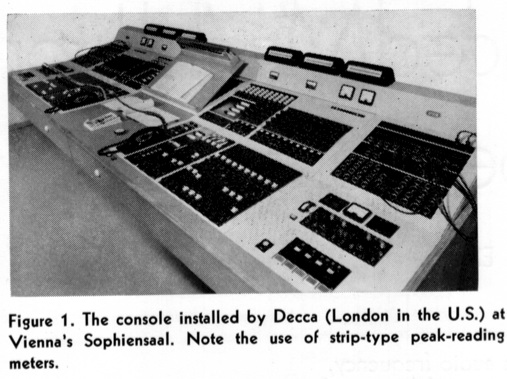
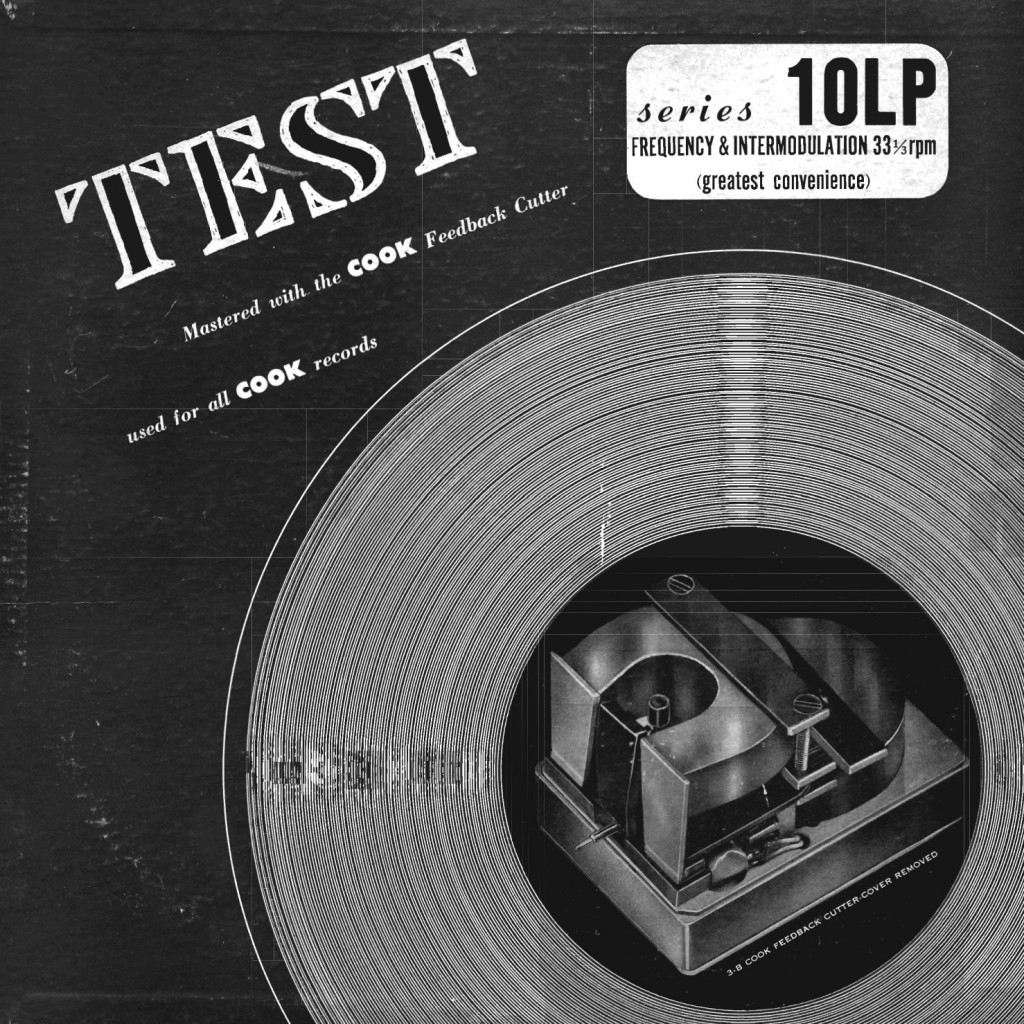 Several weeks ago I ran an article on Emory Cook, binaural recording pioneer and Connecticut entrepreneur. Click here to read that piece. T.F. contributed the wonderful and very-hard-to-find resources for that article, and we follow up today with some scans of a notable early Cook Labs product: the LP10 test-record. You can download several of these resources here:
Several weeks ago I ran an article on Emory Cook, binaural recording pioneer and Connecticut entrepreneur. Click here to read that piece. T.F. contributed the wonderful and very-hard-to-find resources for that article, and we follow up today with some scans of a notable early Cook Labs product: the LP10 test-record. You can download several of these resources here:
Emery Cook – Test Records brochure
Emery Cook – Series 10LP test record sleeve
Emery Cook – Series 10LP data sheet
Emery Cook – Series 10 Test Record Technical Bulletin
*******
***
I have a small collection of Test LPs myself, but I know nothing about the history and development of this type of product. T.F. graciously provided some background in the comments section, and I have reproduced that text here to facilitate easier reading:
“The way I understand the history (of test records), both RCA and Columbia produced microgroove test records when they developed their microgroove formats (45RPM 7″ disk for RCA, 12″ and 10” 33 RPM disks for Columbia). But these test disks were for professional mastering places, playback equipment designers and manufacturers, etc.
The Cook record seems to have been aimed at both professionals and serious hobbyists who were building and/or setting up phono playback equipment. Cook was also clever with marketing, this record proved the quality of his cutting equipment. In the early days of the microgroove, I don’t think there were very many other options for the hobbyist beyond the Cook record.
In 1954, when the industry adopted the RIAA curve, a bunch of semi-professional “test and demo” records came along, sometimes including calibrated test tones and sometimes just including “tracking challenge” music and sound effects. There was another bevvy of “test record” releases when the stereo LP debuted in 1958. In the 70s, we had more.
From the early days of the stereo LP, the CBS Labs test records were the standard device for designing and building playback equipment. The Command Stereo Test Record was made at Fine Recording. It includes calibrated tones to set level and check frequency response, as well as a phase test and a silent groove to test for rumble. Side two is a narrated tour of some Command pop tunes pointing out what to listen for, to determine if the cartridge is tracking correctly.
The most recent calibrated test record is from Analogue Productions. Its levels test out to be accurately described and it is well calibrated to the RIAA curve, so it’s quite useful for setting levels, balance and testing the frequency response of a cartridge. It’s also got a useful test for wow and flutter and a speed-check tone (which shows that many of the modern lower-priced belt-drive turntables don’t hold 33.3RPM due to cheap motors and cheap platter bearings). The Analogue Productions record is very well manufactured, on quite and pretty much tick-free vinyl.
One big thing that test records have shown me is how many cartridges have uneven channel-to-channel levels and sometimes uneven frequency response. In the lower priced world, you can’t beat the Denon DL-110, it’s super-flat and nearly identical channel-to-channel (3 different units tested, manufactured over a 10-year period).“
Hi-Gain PA Amplifier Circa 1950
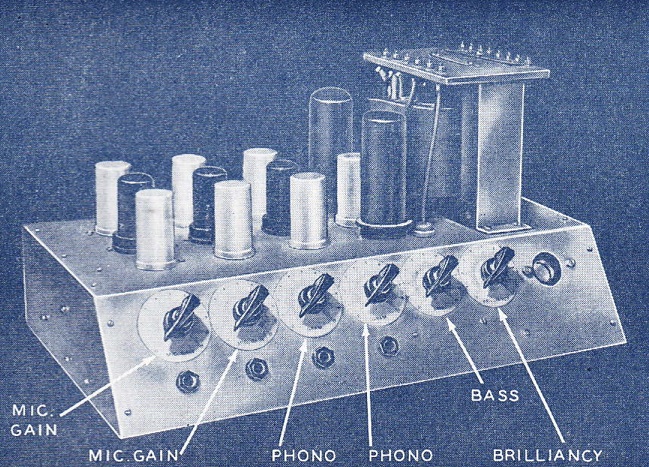 From Radio-Electronics, 1950, comes this circuit by one James Rundo. Download the article by clicking here:
From Radio-Electronics, 1950, comes this circuit by one James Rundo. Download the article by clicking here:
DOWNLOAD: HiGainPA_Amp_1950
 Above, the circuit. The front-end is set up for very low-impedance unbalanced mics that mix through a resistor network through a single (VERY) high ratio input transformer; so that bit is not very useful. What makes this piece of interest is the unusual tone control scheme. See the article for the details. Could make for a really unique guitar or studio bass amp.
Above, the circuit. The front-end is set up for very low-impedance unbalanced mics that mix through a resistor network through a single (VERY) high ratio input transformer; so that bit is not very useful. What makes this piece of interest is the unusual tone control scheme. See the article for the details. Could make for a really unique guitar or studio bass amp.
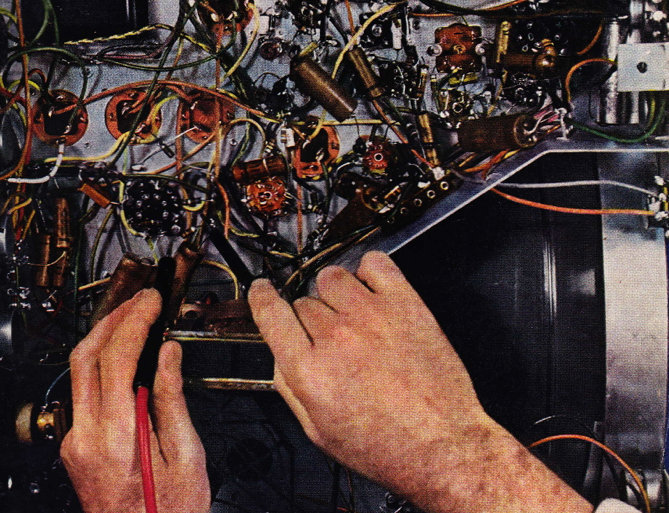 that’s right, git all up in that shit MOTHAFUKKA
that’s right, git all up in that shit MOTHAFUKKA
Ahem. From RADIO-ELECTRONICS circa 1950 comes this piece on a forgotten cul-de-sac of audio production, the ‘magnetic-transfer-field’ method of duplicating analog audiotape. WTF? Read on and learn, dudes (VIA is there a lady? Do any women read this nonsense? if so, pls speak up thanks).
DOWNLOAD: MagneticTapeDupe1950
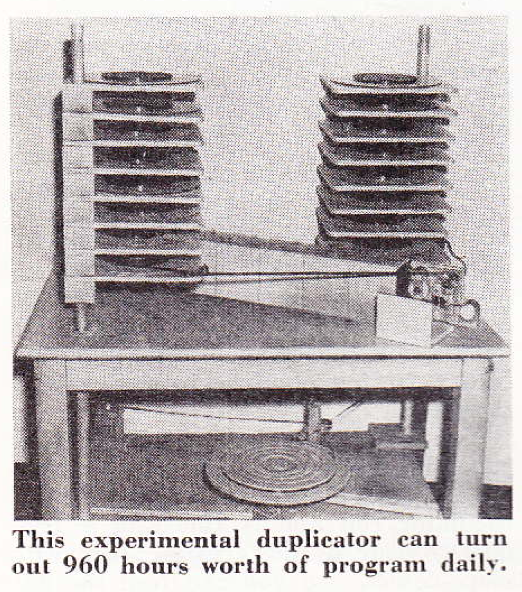 I was in Marin county this past weekend and I met some pretty interesting folks at the yard-sales. First, a dude who made a lot of the DigiRack presets in protools, and hours later, a very old fellow who used to build bridges+road by day and then service musical equipment by night. Hooked me up with some amazing ancient tech-data books. fascinating sorta shit/sorta folks that I don’t seem to find too often out here East. Anyhow… point is… there are so, so, so many weird little roads of audio-production that have not been traveled by plug-in designers… so many paths still unexplored digitally. Every weird dead-end of commercial audio production awaits a potential rebirth in the plug-in age… Via: someone make a magnetic-transfer-field simulator already?
I was in Marin county this past weekend and I met some pretty interesting folks at the yard-sales. First, a dude who made a lot of the DigiRack presets in protools, and hours later, a very old fellow who used to build bridges+road by day and then service musical equipment by night. Hooked me up with some amazing ancient tech-data books. fascinating sorta shit/sorta folks that I don’t seem to find too often out here East. Anyhow… point is… there are so, so, so many weird little roads of audio-production that have not been traveled by plug-in designers… so many paths still unexplored digitally. Every weird dead-end of commercial audio production awaits a potential rebirth in the plug-in age… Via: someone make a magnetic-transfer-field simulator already?
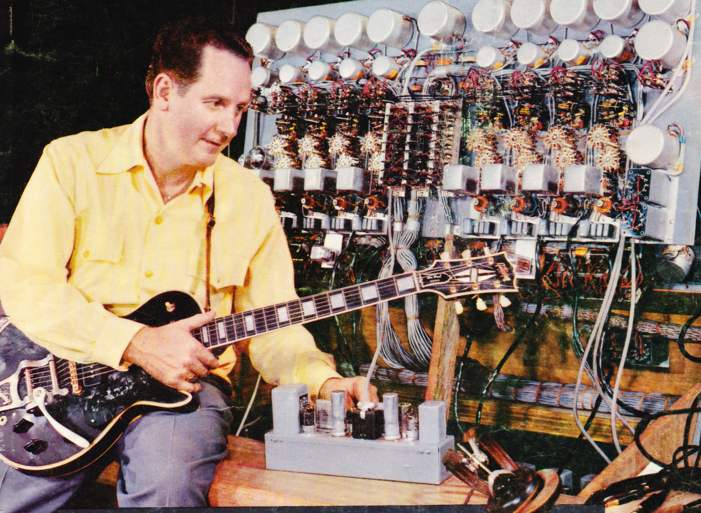 Les Paul discusses his DIY’d home eight-track studio in RADIO ELECTRONICS 1958. Thanks to JF for providing this scan.
Les Paul discusses his DIY’d home eight-track studio in RADIO ELECTRONICS 1958. Thanks to JF for providing this scan.
Electrodyne circa 1969
 Hello y’all… Once again I will be dusting off ye old 70s soul and punk vinyl at FIREHOUSE 12, New Haven CT, alongside my good old friend JBW aka SWAY… We’re on tomorrow, Wednesday the sixth, from 9PM til one. Come on down to the best bar in CT and hear some (lost)(never were)(prolly should-have-been) classics.
Hello y’all… Once again I will be dusting off ye old 70s soul and punk vinyl at FIREHOUSE 12, New Haven CT, alongside my good old friend JBW aka SWAY… We’re on tomorrow, Wednesday the sixth, from 9PM til one. Come on down to the best bar in CT and hear some (lost)(never were)(prolly should-have-been) classics.
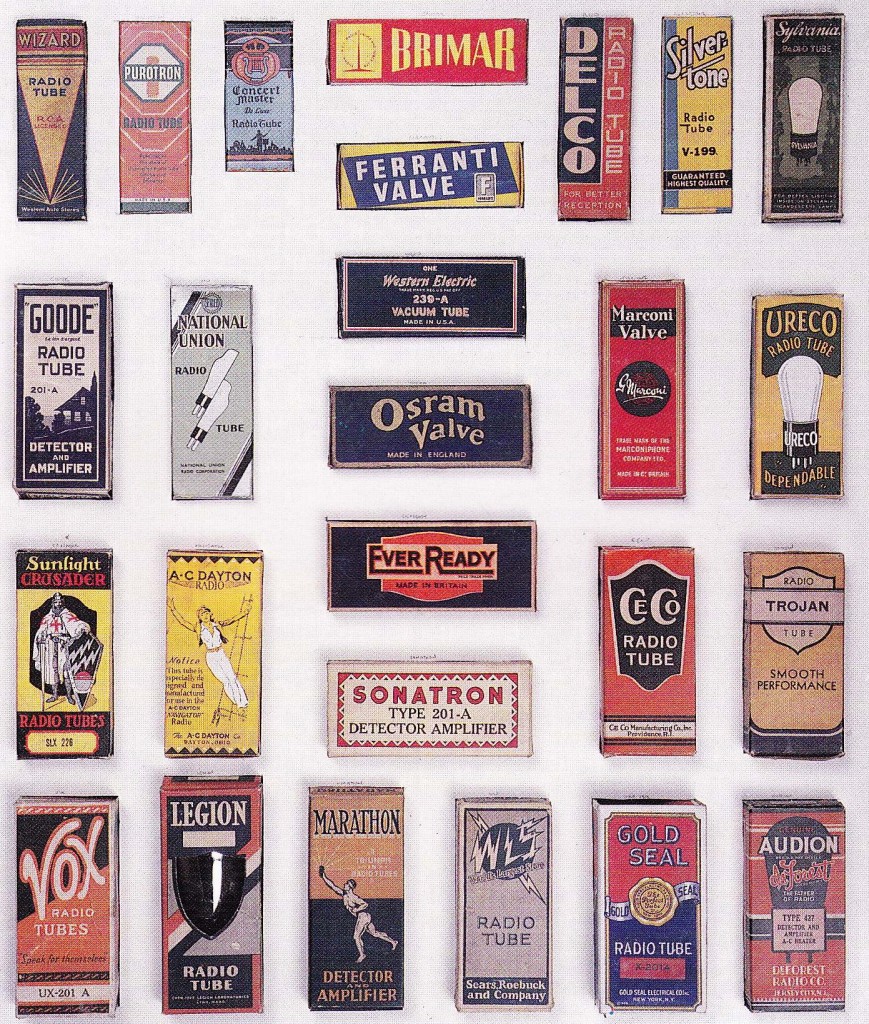 From “The Old Timer’s Bulletin” Vol 33., #1: a short piece on the minor hobby of collecting and displaying antique tube BOXES. Not the tubes, mind you, just the boxes. Fast forward to me in 30 years…
From “The Old Timer’s Bulletin” Vol 33., #1: a short piece on the minor hobby of collecting and displaying antique tube BOXES. Not the tubes, mind you, just the boxes. Fast forward to me in 30 years…
*******
***
I recently bought a huge pile of the old radio fanzines; hundreds, probably, from the family of a deceased collector, likely; and while Old Radios just aren’t ‘my thing,’ the ‘zines are great, really charming+heartfelt lil snapshots of collector-life. The only parallel I have seen in the musical-gear world is Vintage Guitar magazine, which is eh so-so. I have subscribed and unsubscibed to VG a few times now, it’s not bad, and the price is certainly right, but I dunno it just sorta misses the mark… maybe it’s just too dry… Anyhow, in this era of online-everything, are there any noteable audio and/or instrument print-fanzines still in production? Anything worth checking out? Let us know…
